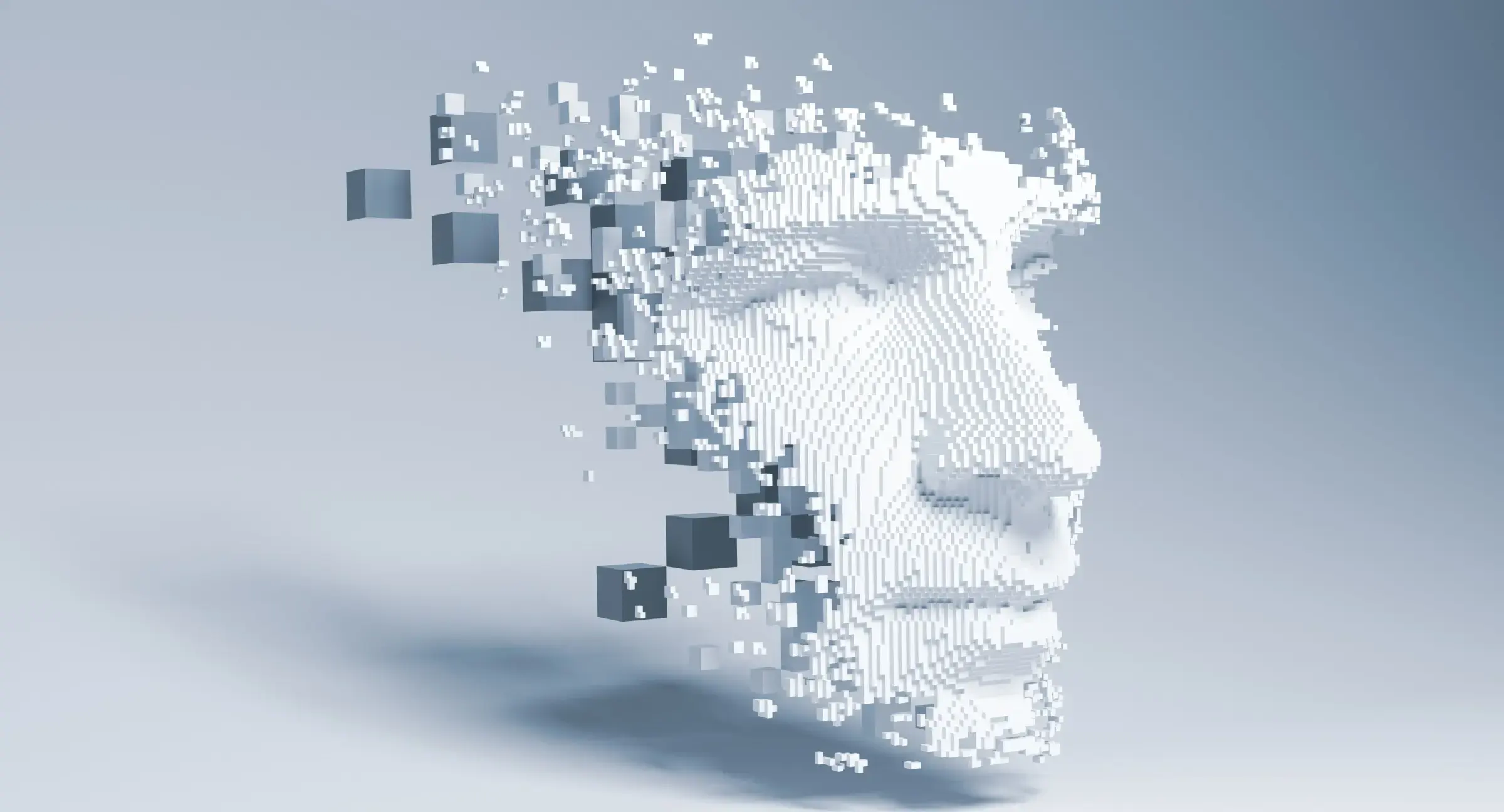It's Time to Get WISE.
Patrick Dillon
CEO
Matthew Hinkle
Director of Accounts
Apply Today
Please fill out the information below. Someone on our team will reach out in 3-5 business days to schedule a call if we see a good fit.
Book Patrick Dillon
Thanks for your interest in booking WISE CEO Patrick Dillon on your podcast! Please complete the form below, and a team member will contact you shortly.

Remove Negative Reviews.
AI-Powered Copywriting: Is It Good or Bad for Business?

January 3, 2023
- 9 min read

From robots that manufacture the goods we buy to self-driving cars, checkout-free grocery shopping, robot vacuums, smart assistants, and chatbots—artificial intelligence is increasingly playing a larger role in our daily lives. AI is even producing works of art and writing.
The future is definitely here, whether you’re ready to embrace it and see where it takes us, or you’ve watched a little too much sci-fi and think we’re headed for a robot takeover akin to The Terminator.
As someone who definitely watches too much sci-fi, I can’t help but wonder what kind of dystopian future might be in store for us with the advent of artificial intelligence.
And as the Senior Copywriter for WISE Digital Partners, I cannot help but wonder what AI means for the work I do for our valued clients—crafting SEO-optimized copy that persuades, sells, educates, and informs. What’s better: the copy I craft based on my expertise and years of experience or copy that artificial intelligence, with its machine learning and natural language processing, creates?
AI Has Entered Our “Creative” Sphere
Creativity is an inherent part of human nature. For some, it’s a strong trait. When you think of the type of person with a “creative soul,” you might picture an artist, designer, musician, photographer, sculptor, or writer.
Artificial intelligence, though, is now testing our idea of what it is to be “creative.”
AI Art & Design
You may have heard of DALL-E 2, an AI system that creates images and art with just a few prompts from a human. For example, here’s what it produced when we asked it to create “a Van Gogh-style painting of a teddy bear.” Would you have been able to discern that artificial intelligence, not humans, created these images? I’ll let you be the judge.

Screenshot from DALL-E 2 showing the results generated by a human query
“AI-generated images are really the dawn of a new era of “art” as we know it, and I put art in quotation marks because there is already a bright debate online whether you can call AI-generated images art at all,” says Gloria Bonifazi Young, UI/Visual Designer for WISE.
Young says as a tool, artificial intelligence can be helpful for designers and artists. But she also wonders what that might mean for human creativity.
“AI-generated images can be used as a tool to quickly present alternative concepts in a fraction of the time, multiplying revenue opportunities,” she says. “But if humans adapt to machine production, what are the outcomes? Will it feed the imagination, stifle it, or replace it altogether?”
Another UI/Visual Designer at WISE, Danie Zheng, is also wary. “From my point of view, AI doesn’t understand why it does what it does, what makes an image good or bad, and it’s only ever as good as the individual writing the prompt,” he says. “It’s a completely new tool, and we have no idea where all of this will lead. AI can get as convincing as it wants, but an artist will always be best at directing the content.”
DALL-E 2 comes from the AI research and development company OpenAI, which has also most recently brought us ChatGPT (a chatbot) and Point-E (which can produce 3D models from text prompts).
AI Writing
OpenAI’s GPT (Generative Pre-trained Transformer) is what burgeoning companies like Jasper, Anyword, and Copy.ai are tapping into (via API) to build platforms that create AI-generated copy.
Google is also in the game with its new AI writing tool aimed at helping creative writers craft fiction. It’s called Wordcraft, and it’s powered by LaMDA (short for Language Model for Dialogue Applications).
If LaMDA sounds familiar, it’s probably because it made worldwide news when a Google engineer claimed the language model had become sentient. Google dismissed the claim, but it sparked quite a conversation and debate.
The LaMDA discussion aside, Wordcraft is currently a prototype, and when Google assembled 13 professional writers to try it out, they weren’t all that impressed with its ability to write a well-written story from beginning to end. Even Google admitted that its AI-powered tool was lacking in this type of creative endeavor.
“One clear finding was that using LaMDA to write full stories is a dead end,” Douglas Eck, Senior Research Director at Google Research, said at the event, according to an article by The Verge.
It’s important to note that the professional writers who tried Wordcraft felt the LaMDA-powered tool could be useful for sparking new ideas, so the test wasn’t a complete fail.
Wordcraft and other AI copywriting tools like Jasper, Anyword, and Copy.ai are allowing consumers, including businesses, to use artificial intelligence to partially or wholly produce anything from a blog post to a full novel, and everything in between.
Should Businesses Lean On AI for Writing?
Writing copy, especially at scale, can be challenging. The idea of automating the process using AI certainly might be appealing to marketing agencies or businesses that do their own marketing.
From website copy to social media posts, newsletters, videos, and more, there are a lot of places in the digital universe to attract potential customers. But it takes time and a good amount of effort to write copy for them, whether done in-house or by an outsourced team.
What AI Copywriting Tools Can and Can’t Do
There’s no doubt that AI can write copy much faster and more efficiently than humans. And just as DALL-E 2 can create everything from Impressionist-style paintings to modern digital art and everything in between, an AI copywriting tool can produce many different types of copy. For marketing purposes, in particular, it can create:
- Website content and landing pages
- Blog posts optimized for SEO
- Case studies
- E-books
- Email marketing campaigns and newsletters
- Social media content
- Ad copy
- Product descriptions
- Video/podcast scripts
- Meta descriptions
The leading AI copywriting tools promise to generate grammatically correct, plagiarism-free SEO-optimized copy with the right format, style, and tone for its intended use. But can it really replace a human copywriter? Should a business owner even consider it?
Let’s talk about the quality.
If you use AI to generate copy, you might notice something a little “off.” That’s because humans can better understand subtleties and nuances beyond an AI’s understanding. The artificial intelligence is, after all, simply processing data and mimicking patterns.
“The one thing that AI isn’t good at? Wisdom,” Robert Rose, Chief Strategy Advisor at the Content Marketing Institute, said in a recent video on the topic of AI writing. “It can only mash together the things we tell it to—and provide alternative executions of them. AI can’t merge the ideas of great experience, emotional empathy, and abstract thinking into new, beautiful, and creative things.”
“Good business copywriting shouldn’t just be informative,” says Carlo Victa, Director of Organic Strategy for WISE. “It should be persuasive, creative, coherent, strategic, and on-brand. That’s what we aim for with WISE copy, regardless of the industry we’re writing for—and that’s why you still want humans running the show on copywriting and content strategy.”
To be fair, many writers do find that AI is beneficial to their craft when used as a “tool” in their writer’s toolbox. It can help a writer brainstorm ideas, create outlines to organize a topic, produce that difficult first draft, and improve grammar, style, and clarity.
Our in-house copywriters at WISE use Grammarly to ensure error-free copy for our clients. The AI-powered tool checks for spelling and grammar, plus provides helpful suggestions for strengthening the copy we’ve written. As a writer’s aid, we’ve found it invaluable.
Truth be told, we might at some point consider using full-blown artificial intelligence copywriting tools like Jasper, the leader in the industry, to augment our work. And that’s just what Jasper is going for—a human/AI connection that results in great copy.
“It’s a tool, not a takeover,” Austin Distel, Chief Marketing Officer of Jasper, said in the following interview with professional copywriter Alex Cattoni. “It is here to support you. That’s why we always call it your AI sidekick. The truth is, a human brain needs to be the direction for writing great copy.”
There’s also SEO to consider.
For businesses, being discoverable in online search results is absolute gold. A good SEO strategy gives a brand visibility, helps a business stay competitive, and leads prospective customers to the products or services they’re interested in—the ones you’re selling.
When it comes to search, Google is king, and in August 2022, the company rolled out its helpful content update to reward websites for providing genuinely valuable content to readers.
Google believes content should be “people-first” so that readers have a great experience when visiting a website. It’s now penalizing websites that create copy purely for search engines, especially copy produced with extensive automation, such as AI.
Google is pretty smart—it can easily pick up on copy derived from artificial intelligence, which will negatively impact your ranking.
On the other hand, if a human copywriter writes original copy that’s well-written, is easy to follow, and provides readers with useful information, then Google will reward you for that.
Plus, AI writing is all very new, and the rules are non-existent.
It’s only been a few years since we started seeing companies launch consumer AI copywriting tools—it’s a juvenile technology right now. Currently, no governing body has been put in charge of outlining and enforcing ethics surrounding these platforms and the content they produce. That raises some important questions.
What happens if AI produces inaccurate content?
In the age of “fake news,” there’s a huge concern about AI-produced content infiltrating the internet with misinformation. And it’s a valid concern, at least at this stage in the game.
In an interview with Econsultancy, Nick Duncan, founder of ContentBot.ai, admitted that his own AI platform does have its faults when it comes to factual information. “Most of the time, it does come up with unique and pretty engaging text that is factually correct—for the most part,” he told Econsultancy. “But sometimes it does make up some pretty wild facts.”
Duncan has the same sentiment that Jasper’s Chief Marketing Officer has. He told Econsultancy he believes a human should always be in the loop—that an AI copywriting platform should only be considered an AI writing companion.
What about copyright law?
Copyright law currently applies to human authorship only—works created by artificial intelligence do not fall under copyright protection. But challenges are already being made to the law.
In early 2022, the U.S. Copyright Office rejected a request to copyright a work of art created by artificial intelligence. Later the same year, the organization issued a copyright registration for a graphic novel created mostly by a human but with AI assistance.
Should a writer publicly disclose when using AI?
If yes, should there be a bar? For example, would a writer need to disclose using AI if they simply used it to get an idea for a blog topic to write about? Or what if they used AI to help outline an article or write the first draft? What if, like WISE writers, they simply use it to check spelling and grammar and tighten up writing?
Final thoughts.
While AI writing tools are advancing and getting better at creating readable copy, as a writer, I have to agree with the experts that they’re better as a tool, not as a replacement for a human.
Plus, with Google zeroing in on AI-produced content and penalizing websites that use it to try to improve their SEO, it’s probably best to steer clear from going all in on AI writing, at least for right now.
Human-written copy will positively impact your search rankings, and that’s one of the many reasons that WISE employs a full Copy team that includes a Content Manager, Content Specialist, and Senior Copywriter. We also work closely with a group of skilled freelance writers who specialize in their craft.
Our Copy team collaborates with our SEO team to create relevant, persuasive, and useful content that’s search-engine friendly and helpful for potential customers visiting our clients’ websites. We work together to create just the type of content that Google and other search engines want — and that’s great for business.
Need a digital marketing partner to help drive growth for your business? Book a call with us!
Share
Subscribe to WISE Insights
Stay ahead of the digital marketing curve and never miss a lucrative trend or insightful tidbit – subscribe to our WISE blog!
Keep Reading
Build. Grow. Soar.
Get WISE about digital marketing with advanced services, industry experts, and cutting-edge tools designed for long-term, sustainable growth.








